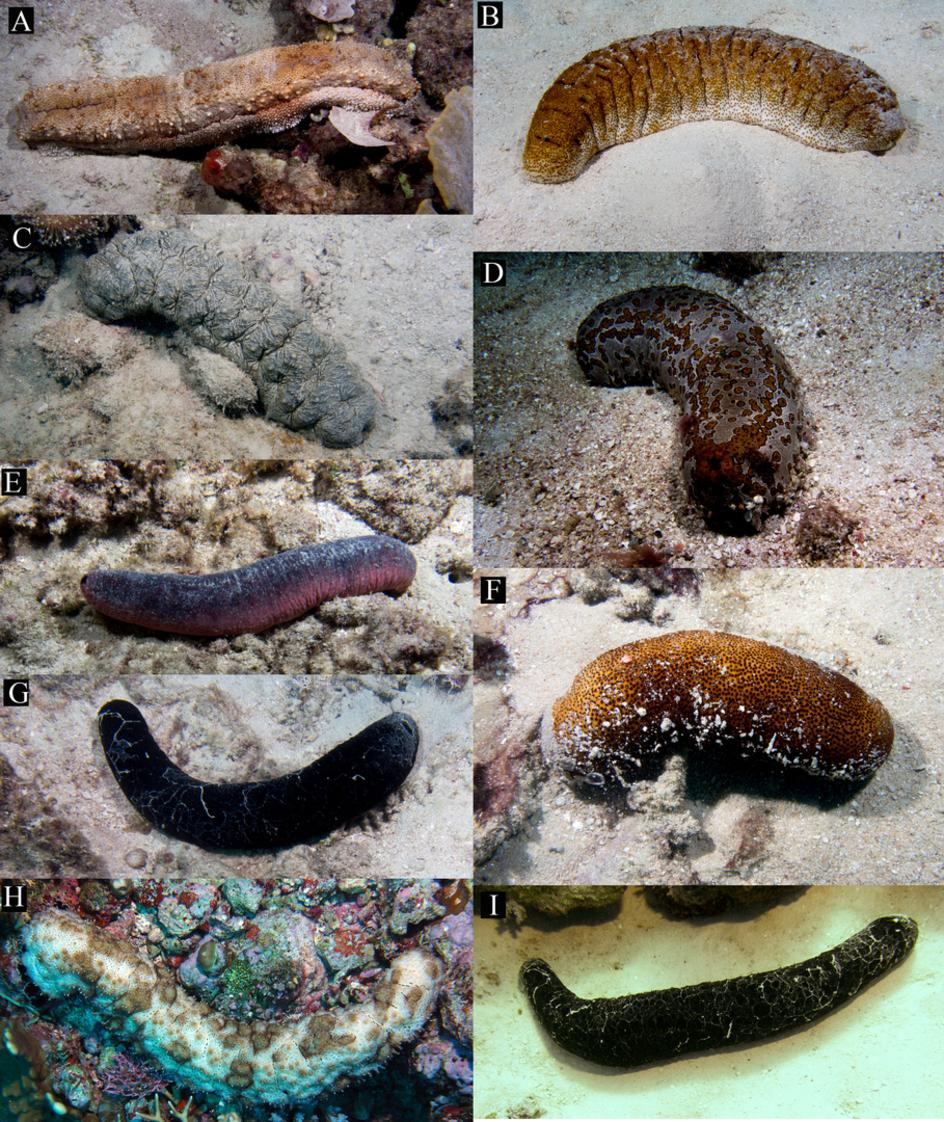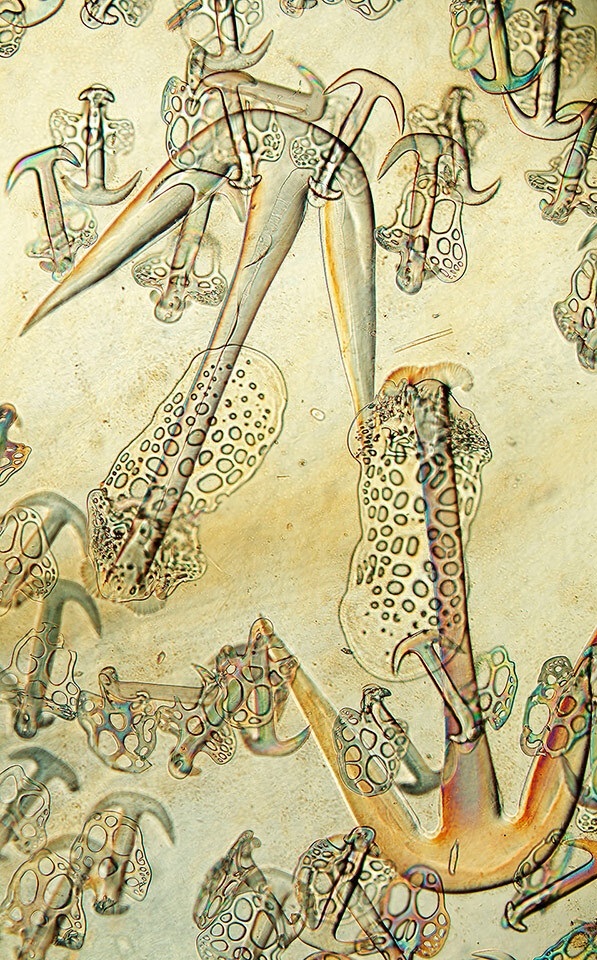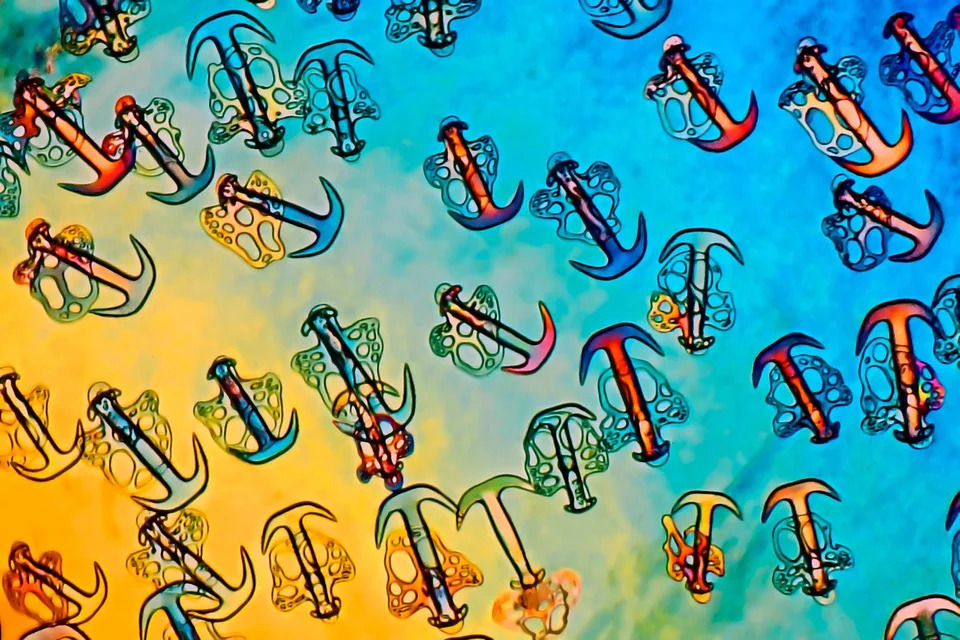Sea Cucumber Skin Under 100x Magnification Looks Like Ship Anchors!
Calling all science geeks and marine enthusiasts! Prepare to have your minds blown as we unveil the wonders of sea cucumber skin under 100x magnification. Trust us, it's unbelievably cool!
Author:Dr. Felix ChaosphereReviewer:Xander OddityJun 14, 20231K Shares85.5K Views
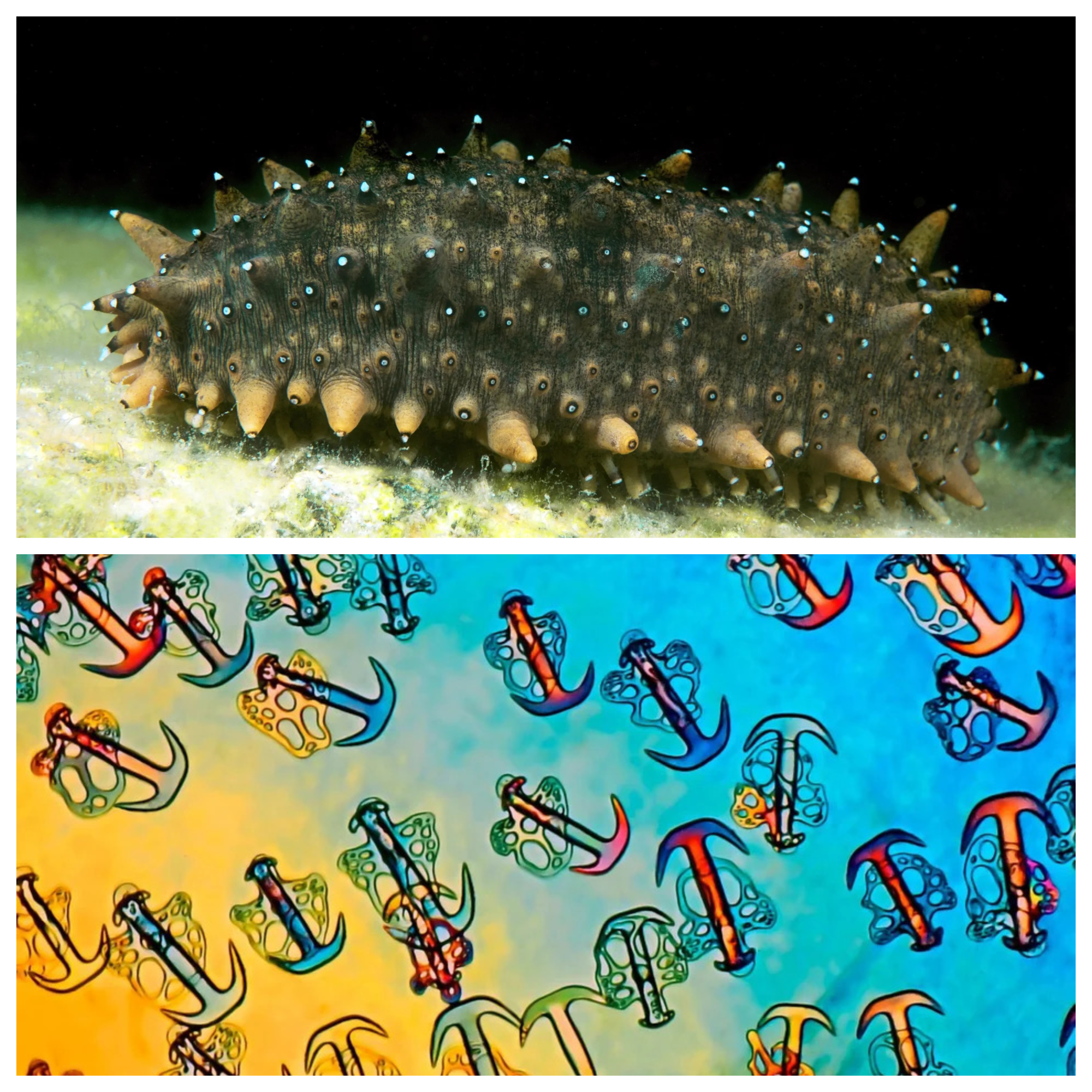
Calling all science geeks and marine enthusiasts! Prepare to have your minds blown as we unveil the wonders of sea cucumber skinunder 100x magnification. Trust us, it's unbelievably cool!
However, before we talk about the magnificent skin of sea cucumbers, let's talk more about sea cucumbers first.
Sea Cucumbers, Fascinating Creatures Of The Ocean
These fascinating echinoderms, cousins of starfish and sea urchins, are true marvels of the ocean. With their cucumber-like shape and tentacle-like tube feet, they may seem unassuming at first glance.
Sea cucumbers are truly remarkable creatures found in the depths of the world's oceans. With approximately 1,250 known species, these soft-bodied organisms often resemble elongated cucumbers, showcasing their incredible diversity in shape and form.
| COMMON NAME | Sea Cucumbers |
| SCIENTIFIC NAME | Holothuroidea |
| TYPE | Invertebrates |
| DIET | Omnivore |
| AVERAGE LIFE SPAN IN THE WILD | 5 to 10 years |
| SIZE | 0.75 inches to 6.5 feet |
Let's get to know their feeding habits, defensive adaptations, unique reproductive strategies, and the importance of their conservation.
Feeding Habits And Ecological Role
Sea cucumbers play a vital role in maintaining the health and balance of marine ecosystems through their feeding habits. These echinoderms have developed a remarkable mechanism to gather their sustenance.
With the aid of 8 to 30 tube feet that resemble tentacles, sea cucumbers diligently collect tiny particles such as algae, minute aquatic animals, and waste materials from the surrounding water or ocean floor.
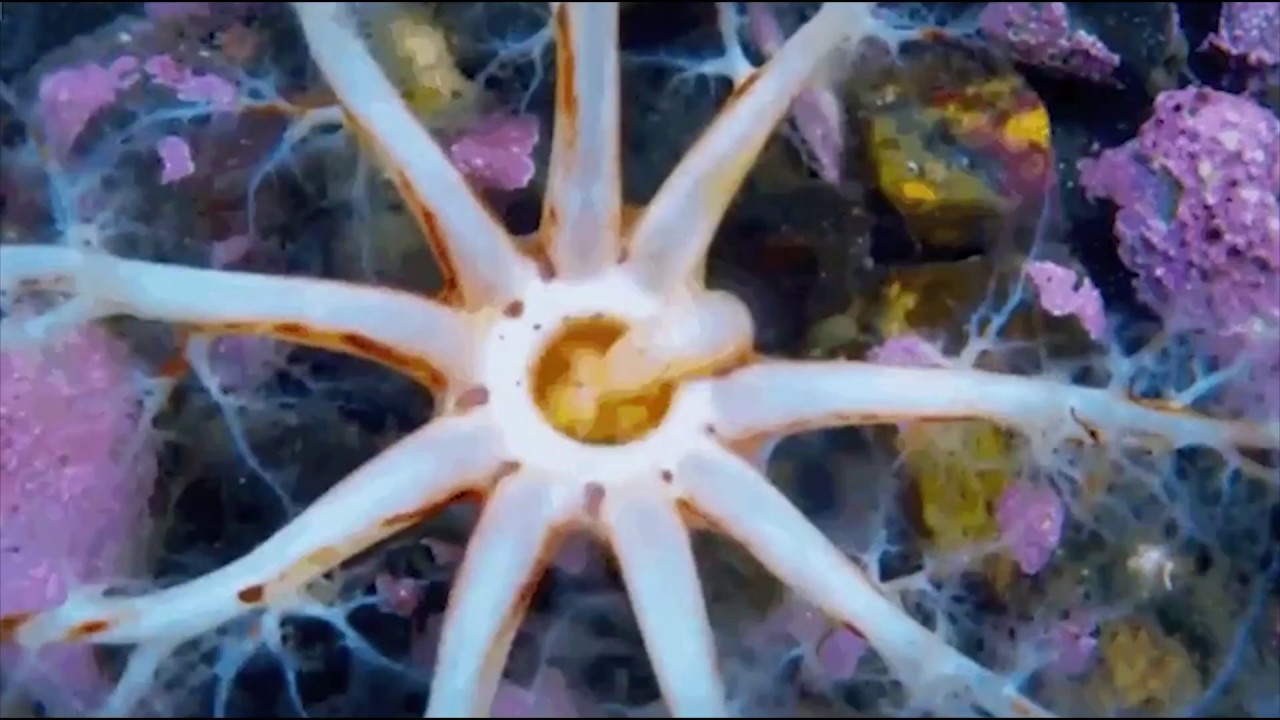
Sea Cucumber Waking Up To Eat Is Just Amazing
Once ingested, sea cucumbers break down these particles into even smaller fragments, creating a nutrient-rich environment for bacteria. These bacteria, in turn, recycle the organic matter, effectively returning it to the ocean ecosystem. This feeding process is comparable to the crucial role earthworms play in terrestrial ecosystems by breaking down decaying organic matter.
Predation And Culinary Delicacy
Sea cucumbers are not only important contributors to the marine food web but also serve as prey for various marine animals. Fish and other marine creatures, especially during the early stages of their development, rely on sea cucumbers as a source of sustenance. However, humans, particularly in Asian countries, have also discovered the culinary delights that these fascinating creatures offer.
In some cultures, sea cucumbers are considered a delicacy and are incorporated into traditional cuisines. As a result, certain species of sea cucumbers are farmed for their consumption, leading to concerns about the impact of overfishing and unsustainable harvesting practices on their populations.
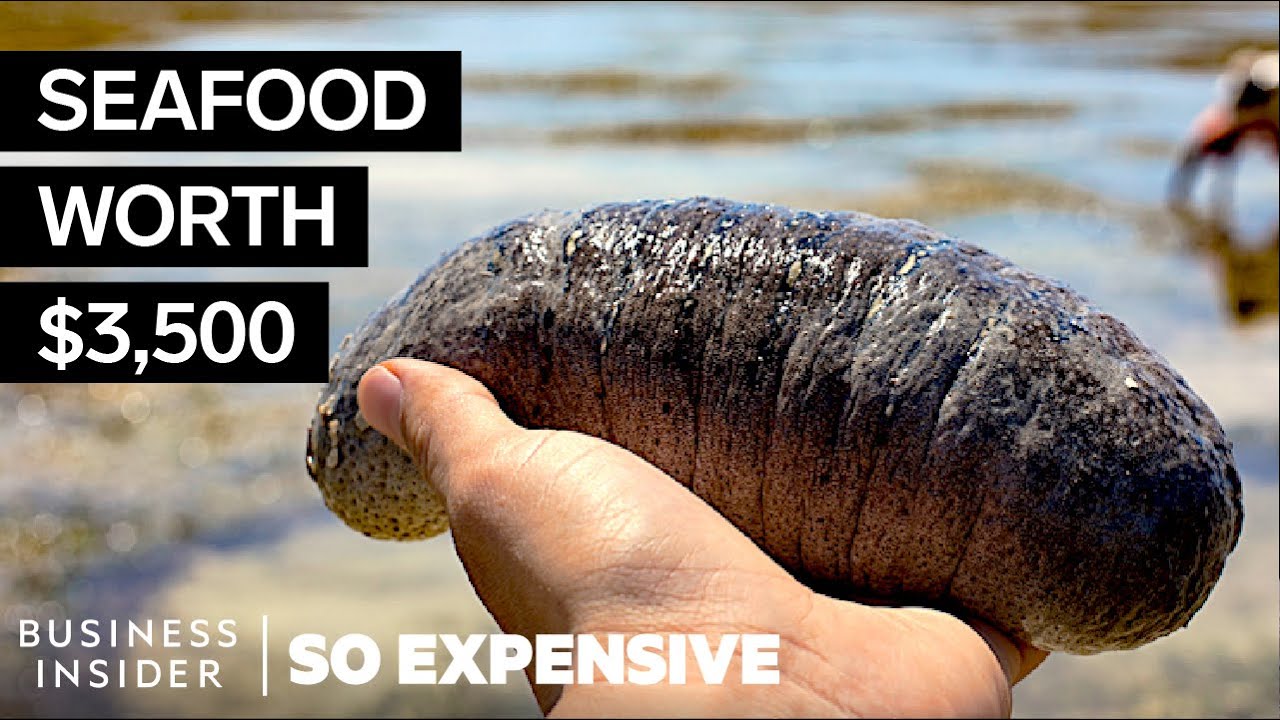
Why Sea Cucumbers Are So Expensive | So Expensive
Incredible Defensive Adaptations
When faced with threats or potential predators, sea cucumbers exhibit an array of defensive adaptations that set them apart. Some species of sea cucumbers possess the ability to discharge sticky threads from their bodies, creating a web-like trap to ensnare their enemies. This defense mechanism allows them to immobilize and confuse predators, providing a chance for escape.
In more extreme situations, certain sea cucumbers resort to a drastic defense tactic. By violently contracting their muscles, they expel a portion of their internal organs through their anus.
While this self-mutilation may seem extreme, it serves as a potent deterrent, as the expelled organs can distract or even harm the attacker. Remarkably, sea cucumbers possess the ability to regenerate these missing body parts, ensuring their survival in the face of adversity.
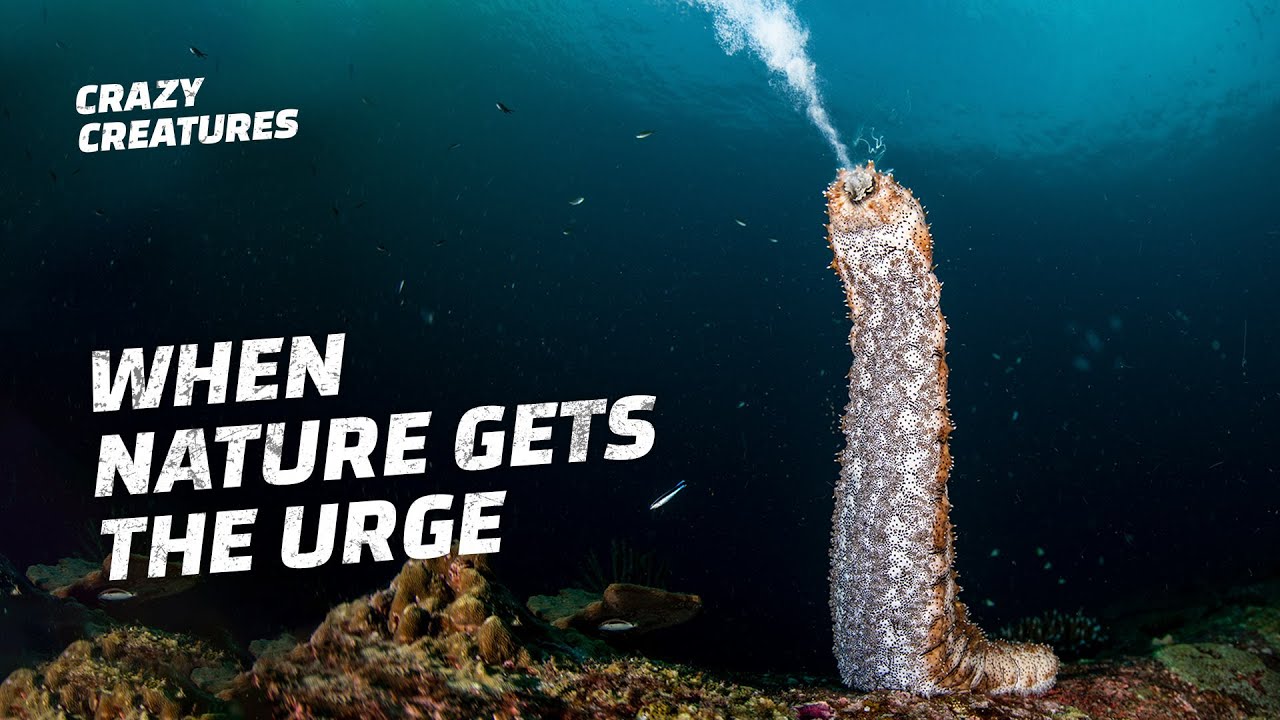
This Is How Sea Cucumbers Defend Themselves
Reproductive Strategies
Sea cucumbers employ both sexual and asexual reproduction methods, although sexual reproduction is more common. Despite being part of an ancient group of organisms, the process of sexual reproduction in sea cucumbers lacks intimacy.
To reproduce, individuals release both eggs and sperm into the water, where fertilization occurs upon contact. This method requires a substantial population of sea cucumbers to increase the likelihood of successful reproduction.
In certain regions of the deep ocean, vast numbers of sea cucumbers gather, forming large herds that graze upon the microscopic bounty present in the marine waters. This abundant food source allows them to thrive and sustain their populations, contributing to the overall health and productivity of the ocean ecosystem.
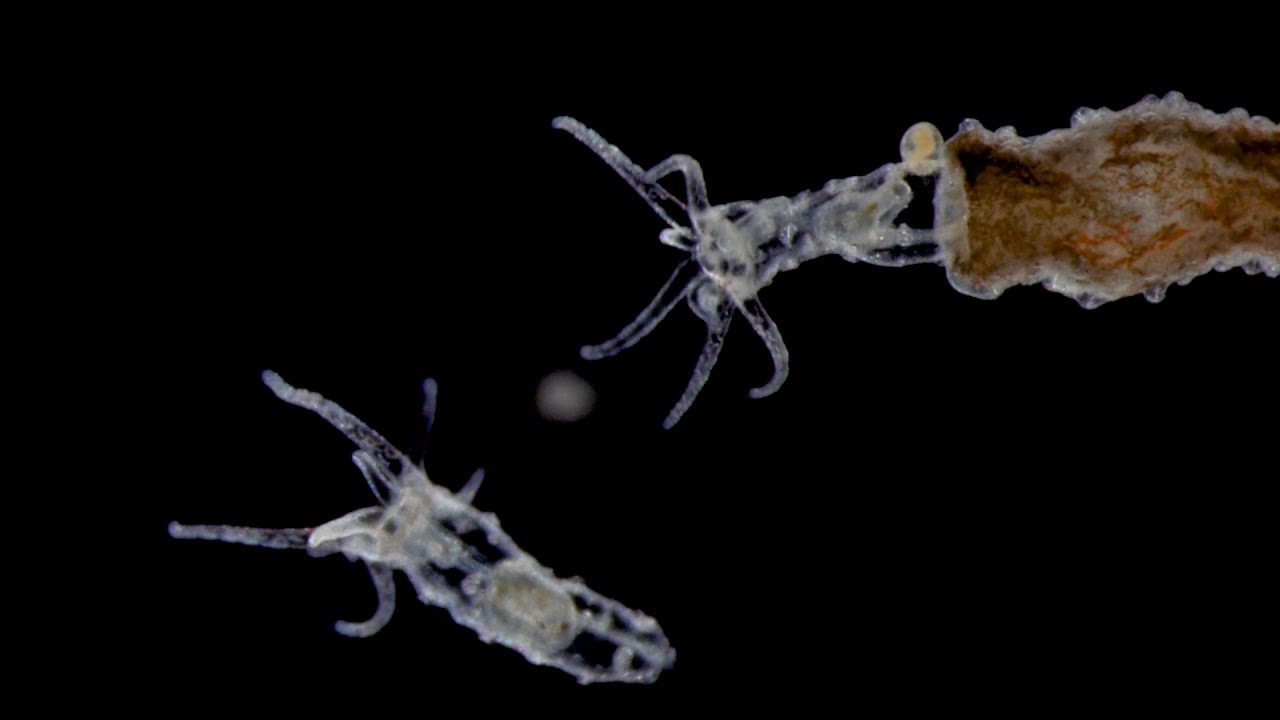
A pregnant sea cucumber giving birth
Conservation Considerations
Currently, sea cucumber populations remain relatively stable. However, due to their increasing popularity as culinary delicacies, concerns arise regarding their conservation. Overfishing and unsustainable harvesting practices can have detrimental effects on their populations and the delicate balance of marine ecosystems they contribute to.
To ensure the long-term survival of sea cucumbers and preserve the health of our oceans, it is crucial to implement sustainable fishing practices, establish protected marine areas, and promote responsible consumption.
Conservation efforts, such as regulating fishing quotas and raising awareness about the ecological significance of these remarkable creatures, are essential for safeguarding the future of sea cucumbers and the biodiversity of our oceans.
Fun Fact!
Sea cucumbers have a cool defense move - they whip out skeletal hooklike structures to fend off predators and say, "You can't eat me that easily!"
The Smart Sea Cucumber Skin
Sea cucumbers, those quirky creatures of the seabed and coral reefs, possess a truly remarkable feature: their smart skin. From lumpy and bumpy to spiky textures, these flexible beings can transform their bodies from pliable as wax to stiff as a board within moments. How do they achieve such astonishing flexibility? The secret lies in their skin.
The skin of sea cucumber has three distinct states:
- stiff
- medium
- soft
This incredible adaptability is achieved by the linking or unlinking of fibers in their skin. Special proteins come into play, activating the process of either stiffening or softening the skin.
Stiffening proteins create tiny bridges between fibers, effectively increasing rigidity and making the skin more resistant to external forces. On the other hand, softening proteins work their magic by unchaining the fibers, rendering the skin softer and more pliable. In fact, sea-cucumber skin can become so soft that it appears to almost melt before your eyes.
The brilliance of the sea cucumber's smart skin hasn't gone unnoticed by scientists. Inspired by its adaptability, researchers are working to develop materials that mimic this unique property.
One area of focus is creating electrodes for brain surgery that can be placed precisely where needed but then soften to reduce the risk of rejection by the body. The potential benefits of such adaptable electrodes are enormous.
Now, the question arises: did the smart skin of the sea cucumber evolve through natural processes, or was it designed? It's a topic that sparks curiosity and debate among scientists and thinkers alike. The intricate mechanisms and purposeful functions of sea-cucumber skin certainly raise intriguing questions about the origins of such remarkable adaptations.
As soft-bodied marine invertebrates, sea cucumbers have attracted attention not only for their smart skin but also for their value as a source of high-quality marine collagen. With increasing concerns about pathogenic diseases and religious sentiments regarding mammalian collagen, sea cucumbers have emerged as an alternative source.
However, the availability and properties of collagen in sea cucumbers vary depending on factors such as species, environment, and diet.
Looking closely at the skin of a sea cucumber under a polarised light micrograph reveals a captivating sight. Paired spicules, known as "plates and anchors," adorn the skin, with the sharp spikes of the anchors possibly acting as a deterrent to potential predators. Interestingly, the edible sea cucumber's anchors lack sharp points and resemble the appearance of the plates.
David Maitland, an avid enthusiast of science, nature, and art, stumbled upon an old museum slide that piqued his curiosity. Little did he know that the image he would capture would leave people questioning, "What is that?"
Using a technique called differential interference contrast, David skillfully illuminated the microscopic specimen, revealing its intricate 3D structure. The result was nothing short of captivating. Resembling the anchor of a boat, these minuscule projections protruding from the skin of a sea cucumber are called spicules. And they have a fascinating story to tell.
Composed of a transparent and brittle mineral called calcium carbonate, these needle-sharp structures serve a vital purpose. They act as a protective shield for the soft bodies of sea cucumbers, offering defense against potential threats in their marine habitat. Furthermore, these spicules play a significant role in distinguishing between the numerous species of sea cucumbers that inhabit our oceans.
Another photo was taken by Christian Gautier using the polarized light technique and won 18th place at the 2017 Photomicrography Competition. The photo called Synapta(sea-cucumber) skin, is the skin of a sea cucumber with 100x magnification.
The photo of the magnified sea cucumber skin has left many people both amazed and appalled, evoking strong reactions from viewers on Reddit. Some were so astounded by the image that they couldn't believe it was real, questioning its authenticity.
MaadMaxx:
So you're saying sea cucumbers are tatted up with sailor's anchors on their whole bodies?
LordHeph625:
If true, this is the most fake-looking real thing I’ve ever seen.
The intricate details and unique appearance of the spicules resembled an otherworldly creation, challenging their preconceived notions of what exists in the natural world.
On the other hand, there were those who experienced a "eureka" moment upon seeing the photo.
Robinkc1:
They’re clearly anchors with plastic from a six pack around them.
abow3:
Ice picks? I thought the whole ironic point is that they look like ship anchors. Seacucumber.
While some people just have some random things in mind.
rodrifran:
I want this pattern on some swimming trunks
concretecat:
If you want the shirt to be like a million dollars!?
Zoom in, this pattern is insanely complicated!
Gold-Vanilla5591:
It reminds me of the episode where Patrick was eating cheese off the hooks
While some may have found the sea cucumber skin funny, it is indeed remarkable for anyone who had the chance to look at the photo.
Overall, the sea cucumber's smart skin continues to captivate scientists and enthusiasts alike.
People Also Ask
What Type Of Skin Do Sea Cucumbers Have?
Sea cucumbers, being soft-bodied marine invertebrates, have leathery skin, and their elongated bodies, particularly the body wall, are highly sought after in the market.
Do Sea Cucumbers Have Skin?
Sea cucumbers, these squishy invertebrates, belong to the echinoderm family, making them distantly related to starfish and sea urchins. However, unlike their spikey counterparts, sea cucumbers have a unique feature – instead of hard spines, their bodies are covered in soft, leathery skin.
What Is The Epidermis Of A Sea Cucumber?
The epidermis of a sea cucumber, such as the scabra species, consists of a single layer of cells covered by a protective cuticle. It is supported by a sub-epidermal connective tissue layer and includes a layer of circular musculature. Two nerve plexi are present at the base of the epidermis and the base of the mesothelium.
Why Do Sea Cucumbers Have Leathery Skin?
Sea cucumbers have leathery skin primarily composed of collagen fibers, while their microscopic calcium carbonate plates are embedded beneath the skin. This unique skin composition allows sea cucumbers to flexibly loosen and tighten the collagen fibers, enabling them to maneuver through narrow spaces, almost as if they can liquefy their bodies.
What Are 3 Interesting Facts About Sea Cucumbers?
- Sea cucumbers do not have a brain.
- Sea cucumbers are nocturnal, so they are more active at night.
- This species can reproduce either by themselves or with a mate.
Conclusion
In conclusion, the mind-boggling photo of sea cucumber skin has left many scratching their heads in both astonishment and bewilderment. It's like a cosmic riddle that tickles the geeky neurons of our brains.
Some viewers were so perplexed by the otherworldly appearance that they questioned the photo's authenticity, suspecting a clever prank by mischievous marine aliens. Meanwhile, a few intrepid souls had a "eureka" moment, connecting the dots between the anchor-like spicules and the name "sea cucumber," finally understanding the nautical reference. Who knew these quirky creatures could be so deeply intertwined with the mysteries of the sea?

Dr. Felix Chaosphere
Author
Dr. Felix Chaosphere, a renowned and eccentric psychiatrist, is a master of unraveling the complexities of the human mind. With his wild and untamed hair, he embodies the essence of a brilliant but unconventional thinker. As a sexologist, he fearlessly delves into the depths of human desire and intimacy, unearthing hidden truths and challenging societal norms.
Beyond his professional expertise, Dr. Chaosphere is also a celebrated author, renowned for his provocative and thought-provoking literary works. His written words mirror the enigmatic nature of his persona, inviting readers to explore the labyrinthine corridors of the human psyche.
With his indomitable spirit and insatiable curiosity, Dr. Chaosphere continues to push boundaries, challenging society's preconceived notions and inspiring others to embrace their own inner tumult.

Xander Oddity
Reviewer
Xander Oddity, an eccentric and intrepid news reporter, is a master of unearthing the strange and bizarre. With an insatiable curiosity for the unconventional, Xander ventures into the depths of the unknown, fearlessly pursuing stories that defy conventional explanation. Armed with a vast reservoir of knowledge and experience in the realm of conspiracies, Xander is a seasoned investigator of the extraordinary.
Throughout his illustrious career, Xander has built a reputation for delving into the shadows of secrecy and unraveling the enigmatic. With an unyielding determination and an unwavering belief in the power of the bizarre, Xander strives to shed light on the unexplained and challenge the boundaries of conventional wisdom. In his pursuit of the truth, Xander continues to inspire others to question the world around them and embrace the unexpected.
Latest Articles
Popular Articles
